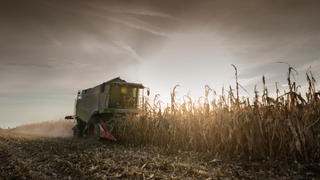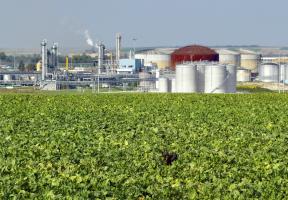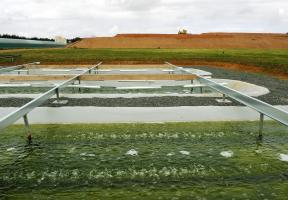Biofuels: How "Green" and Sustainable Are They?
10 min read
Once hailed as "green fuels", the first industrial-scale biofuels have come under scrutiny as people question the true amount of energy used in their production and their impact on food crops.

© - Developing biofuels raises farmland use issues ©THINKSTOCK
Biofuels were developed to meet a variety of objectives, such as promoting agricultural resources, increasing national and ensuring steady revenues for farmers. They first appeared in the 1970s in Brazil and the United States – both of which continue to be big producers and consumers – before migrating to Europe in the 1990s.
With growing concern over toward the end of the 20th century, biofuels began to emerge as a less carbon-intensive alternative to petroleum-based fuels. In 2003, the European Union (E.U.) began encouraging Member States to set binding targets for the use of biofuels alongside their non-renewable counterparts. Then in 2009, it went one step further by requesting that by 2020 Member States source 10% of all energy used in the transportation sector from renewable sources (primarily biofuels but also "green" and ).
However, experts and environmental groups soon began to question several aspects of the biofuel production process1, such as:
- and CO2 emissions. Every step in the biofuel production process requires energy, be it for the fertilizers and pesticides used on the crops, the machinery used for conversion, the vehicles used for transportation, etc. Each successive step increases the , which must be taken into account at the end of the value chain.
- Food versus fuel, or the balance between food crops and energy crops. The more farmland used for biofuels, the greater the threat to food production, particularly in regions prone to shortages. Already more than two billion people worldwide live in poverty, and the global population is growing fast.
- Impact on land use. Allocating vast areas of farmland to biofuel crops can trigger rural flight, accelerate deforestation (as in Indonesia following the development of oil palms) or push farmers into what were previously forests and wetlands, thereby eliminating major sources of and highly effective carbon sinks. This process is referred to as indirect land use change (ILUC).
E.U. Sustainability Criteria
In Europe, the debate was – and continues to be – particularly heated among elected representatives, environmental groups, farmers and industry representatives.
In 2009, the European Union introduced " criteria" for biofuels consumed within its borders. To comply, biofuels had to achieve greenhouse gas savings of 35% compared with petroleum-based fuels (rising to 50 % in 2017) and meet certain land use conditions2. A complete change of tack followed in 2012, when the E.U. proposed a 5% cap on crop-based fuels (i.e., first‑generation biofuels) in the transportation . Then in 2015, it introduced a new restriction by limiting biofuels produced from food crops to 7% within the E.U. Finally, in May 2016, the European Union abandoned its 2009 rule, replacing the 10% target for transportation with cross-sector, E.U.-level targets from 2020 onward. Under severe criticism from biofuel producers, the European Union will clarify its position on this highly sensitive issue some time in 2016.
Despite these difficulties, biofuels are still considered essential to reducing CO2 emissions in the transportation sector, particularly in the aviation and trucking industries. The International Air Transport Association (IATA) has vowed to increase the use of biofuels to 10% of total fuel consumption industry-wide by 2017. And the road transportation industry is currently looking for lower-carbon truck fuels – both biofuels and gaseous varieties.
Benefits of Second-Generation Biofuels
Second-generation or "advanced" biofuels, which are produced from lignocellulose or residual oil, would offer the indisputable advantage of not competing with food crops.
However, they do present some drawbacks, such as:
- Significantly higher production costs than first-generation biofuels.
- Appropriation of "residues" that are currently already used as fuels or in animal feed.
- Use of straw and other farming waste that is today buried to improve soil quality and store carbon.
Sources :
- See FAO report
- For an overview of application in France (French only)





















